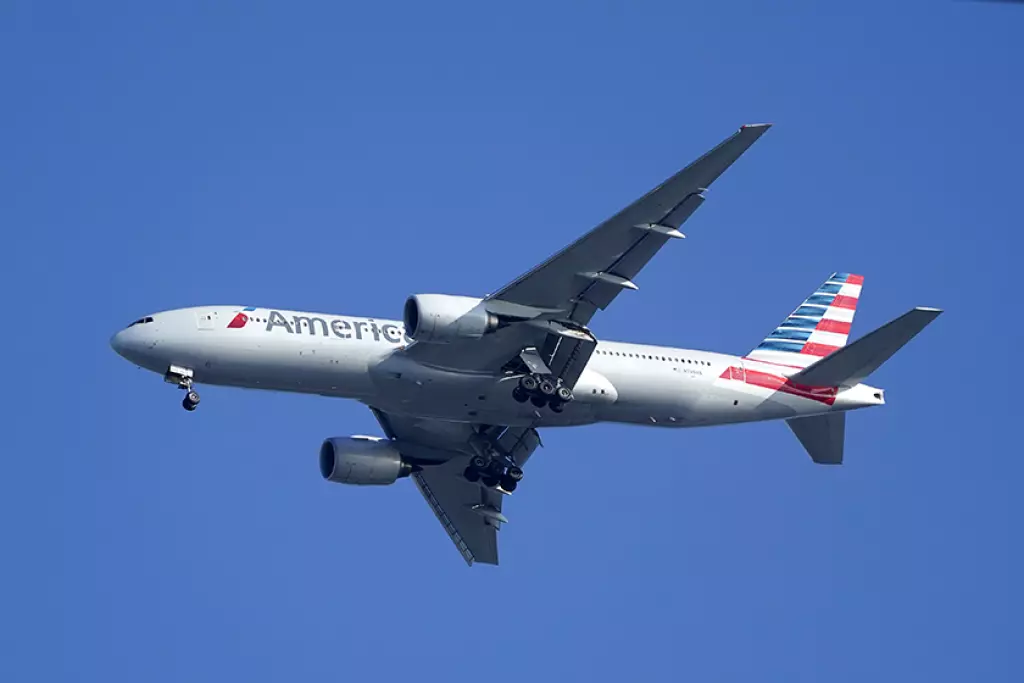Smoke Fills Cabin: American Airlines Flight Diverted and Evacuated Mid-Air
April 18, 2025 – A routine American Airlines flight turned into a tense and dramatic ordeal for passengers and crew after smoke unexpectedly filled the cabin, forcing the aircraft to make an emergency diversion and evacuation. The incident has raised fresh concerns about in-flight safety and emergency response protocols.
The Incident
American Airlines Flight 2587, a domestic flight from Charlotte Douglas International Airport (CLT) to Dallas/Fort Worth International Airport (DFW), was carrying 178 passengers and 6 crew members when the incident occurred. Approximately 45 minutes into the flight, passengers reported an unusual burning smell followed by visible smoke beginning to seep into the main cabin.
Eyewitnesses described a rapid escalation of concern. “It started with a strange odor—almost like burning plastic,” said Karen Mills, a passenger seated near the middle of the plane. “Within a few minutes, there was smoke coming out of the overhead vents. People started coughing and looking around nervously. It became clear something was very wrong.”
The flight crew immediately sprang into action. Oxygen masks were not deployed, as the situation did not result in cabin depressurization, but the crew remained calm and followed emergency procedures. The captain quickly made the decision to divert the flight and radioed air traffic control for clearance.
Emergency Diversion
The nearest available airport was Birmingham-Shuttlesworth International Airport in Alabama. The aircraft made an emergency descent and landed safely around 11:27 a.m. local time. Emergency vehicles were waiting on the tarmac, and as a precaution, the plane was brought to a remote area of the airport for inspection and evacuation.
In an orderly but urgent process, passengers exited the aircraft via emergency slides. Firefighters and airport emergency personnel assisted in guiding people away from the plane as crews began to investigate the source of the smoke.
Miraculously, no serious injuries were reported, though several passengers were treated for smoke inhalation and minor abrasions sustained during the evacuation.
Investigation Underway
The Federal Aviation Administration (FAA) and National Transportation Safety Board (NTSB) have launched an investigation into the cause of the smoke. Preliminary findings suggest the possibility of an electrical malfunction or overheating component in the aircraft’s environmental control system, though officials caution that it’s too early to determine the precise source.
An American Airlines spokesperson released a statement:
> “The safety of our customers and team members is our top priority. We are cooperating fully with authorities to determine the cause of the incident and are conducting our own internal review. We commend the professionalism of our crew, whose swift actions ensured the safety of everyone on board.”
The aircraft involved was a Boeing 737-800, a commonly used and generally reliable model in the American Airlines fleet. Maintenance records for the plane are being reviewed to determine if any prior issues were reported.
Passenger Reactions
Social media was quickly filled with posts and videos from passengers who had recorded the smoky interior, the emergency landing, and their dramatic slide-based exit from the plane. Many praised the flight crew for their composure, but others expressed frustration and fear over what could have been a much worse situation.
“I fly a lot for work, and this was by far the scariest experience I’ve ever had,” said Ben Carson, a marketing executive traveling to a conference in Dallas. “It’s hard not to think about what might have happened if the smoke had gotten thicker or if there was a fire on board.”
Several passengers were rebooked on later flights after being medically cleared, while others opted to continue their journey via ground transportation. American Airlines provided meals, hotel accommodations, and transportation assistance for all affected passengers.
Safety Protocols in Focus
This incident has once again brought airline safety into the spotlight. Aviation experts note that while rare, cabin smoke incidents are taken extremely seriously due to the risk of fire or toxic exposure.
“Smoke in the cabin is among the most urgent in-flight emergencies,” said Dr. Richard Ellis, an aviation safety analyst and former commercial pilot. “Even a small amount can disorient passengers and crew, and if a fire source is present, the situation can deteriorate very quickly. The crew did exactly what they were trained to do—divert and evacuate immediately.”
The FAA requires regular crew training for such emergencies, including fire containment, cabin smoke protocols, and rapid evacuation procedures. The successful outcome of this flight highlights the importance of those strict regulations and drills.
What Comes Next
For now, investigators will comb through flight data recorders, maintenance logs, and onboard systems to piece together a timeline and identify the root cause of the incident. The aircraft will remain grounded until it is deemed safe to return to service.
American Airlines is also reviewing its maintenance and safety procedures, and the incident may prompt an industry-wide reevaluation of similar aircraft systems.
Passengers involved will likely be contacted as part of the investigation, and many have already received compensation and support from the airline. Legal experts suggest that while lawsuits are unlikely given the absence of major injuries, the airline could still face scrutiny depending on the final report.
A Wake-Up Call
Though air travel remains statistically the safest form of transportation, incidents like this are stark reminders that emergencies can and do occur. The professionalism of the crew, the quick decision-making of the captain, and the orderly conduct of the passengers contributed to what could be considered a textbook emergency response.
For passengers aboard American Airlines Flight 2587, it’s a flight they will never forget—one that began as a routine journey and ended with an unexpected escape slide on the tarmac.
As investigations continue, the hope is that lessons learned will help further improve airline safety standards and prevent similar incidents in the future.





